2014 Student Participants

Brandon Adkins, Coastal Carolina University
Faculty Mentor: Dr. Salina Parveen
Graduate Student Mentor: S. Elmahdi
Characterization of Vibrio parahaemolyticus using the Pulsed Field
Gel Electrophoresis (PFGE)
Cases of Vibrio infections have tripled from 1996 to 2010 and these infections are most often associated with the consumption of V. parahaemolyticus (Vp) contaminated seafood, particularly oysters. The present study used pulsed-field gel electrophoresis (PFGE) characterization to investigate the genetic relationships among 33 isolates of V. parahaemolyticus isolated from oysters before and throughout the high salinity relaying process interval days (0.7,14 and 21). Genomic DNA was digested with SfiI, and the fragments were resolved on 1% agarose with a contour-clamped homogeneous electric field apparatus set at 190 V and a pulse time of 3 to 80 s. The results show a high genetic diversity of the bacteria even among the isolates obtained from the same relaying interval day. The isolates from day 21 clusters close to each other with 72% genetic similarity.

Reniece Buchanan, Kingsborough Community College
Faculty Mentor: Dr. Joseph Pitula
Graduate Student Mentor: Sabrina Klick
Hematodinium perezi in sediments and the organism in its community contemporaneously in Blue Crabs (Callinects sapidus)
The Blue Crab (Caillinects sapidus) is an ecologically and economically important crustacean. It is widely distributed from Nova Scotia to Argentina and along the coasts of North America and is most abundant from Texas to Massachusetts. The annual harvest of hard crabs from the Chesapeake Bay accounts for over 50% of the total U.S landing. Hematodinium sp. are known to cause disease and mortality to crustaceans globally. Hematodinium infection has become more prevalent in the blue crab. We know that bacteria in the marine environment have the potential to also be pathogenic. We seek to find out what bacteria co-exist with H. perezi in sediments and water column, as these species may contribute to the mortality of the blue crab. Our detection methods rely on using sensitive PCR-based molecular methodology.
The information gathered in this experiment and others being carried out at our laboratory will contribute to determining efficacy and ecological appropriateness of applying these approaches to understanding blue crab disease.
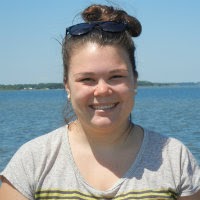
Kasondra Rubalcava, Humboldt State University
Faculty Mentor: Dr. Paulinus Chigbu
Graduate Student Mentors: Juan Alvarez and Hector Malagon
Interannual Variations in the Recruitment of Spot (Leiostomus xanthurus) in the Maryland Coastal Bays
The main objective of this study was to determine the factors influencing variability in the recruitment of spot (Leiostomus xanthurus) in the Maryland Coastal Bays using 23 years of juvenile fish survey data collected monthly from 20 sites by the Maryland Department of Natural Resources. The index of spot recruitment varied between years with the highest recruitment occurring in 1994, although there was no apparent increasing or decreasing trend. Spot recruitment was lower in Sinepuxent Bay than in the other Bays within the MCBs system. There was a significant positive relationship between spot recruitment index and NAO index, perhaps due to warmer winters associated with positive NAO indices that have been documented to result in higher survival of fishes, including sciaenids. No other environmental factor examined, including spring temperature and salinity, significantly explained variations in the recruitment of spot.
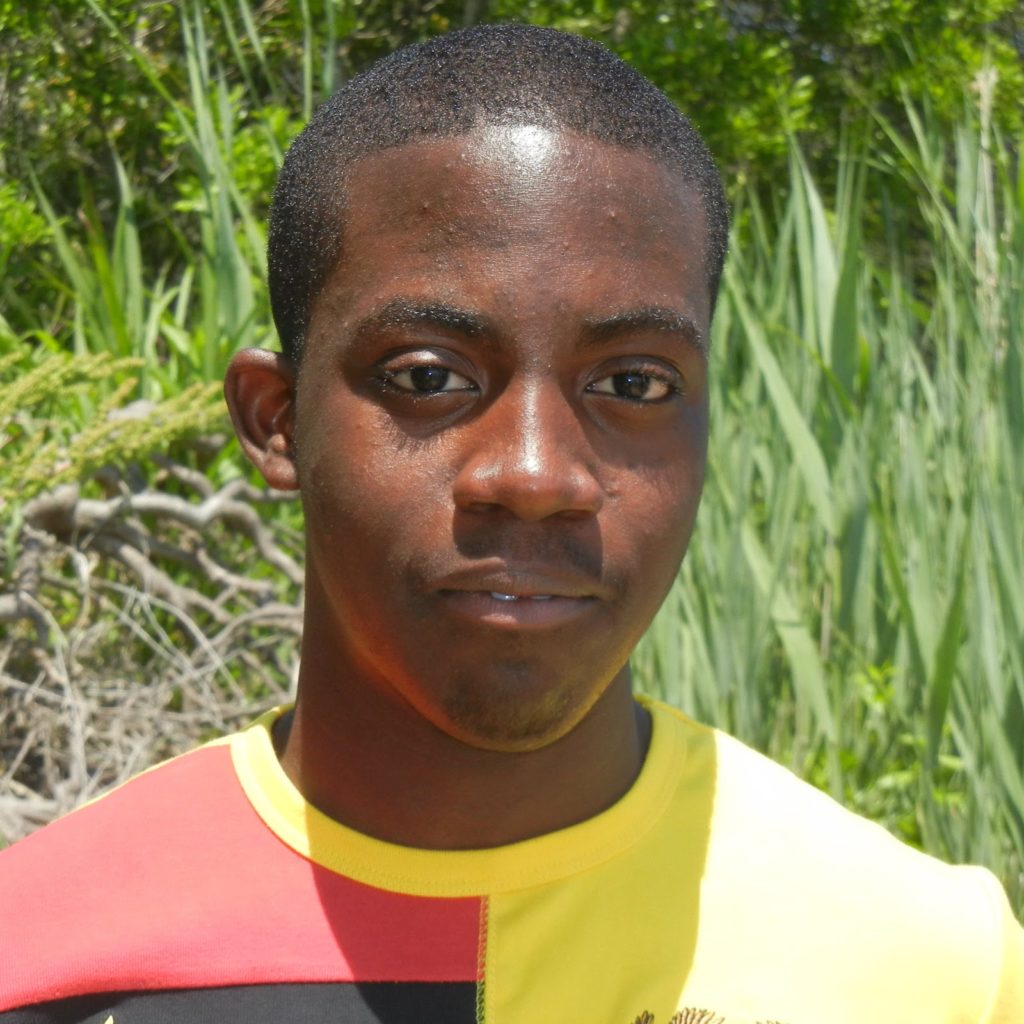
Natan-El Sowah, Allegheny College
Faculty Mentor: Dr. Ali Ishaque
Graduate Student Mentor: Rehab Elfadul
Coauthors: Chelsea Richardson, Ijeoma Ngoka, August Fuller
Vitellogenin as a Biomarker for Exposure to Estrogenic Compounds
Mummichog (Fundulus heteroclitus), Flounder (Paralichthys dentatus), and Striped Killifish (Fundulus majalis) are native to the Maryland coastal waters such as the Maryland Coastal Bays (MCBs). Although these fish have great tolerance for irregular conditions, their populations have been impacted by the influx of endocrine disrupting chemicals. This issue is of great concern because these compounds affect normal behavior and reproduction among male and immature female species. The early production of Vitellogenin (VTG) in immature female fish as well as male fish is attributed to these endocrine disrupting chemicals (EDCs) because they induce VTG production. In order to study the impact of EDCs (estrogen mimics) on fish species, enzyme Immunosorbent assay (ELISA) was used to analyze and compare the concentrations of VTG in liver and gonad samples from two sites. VTG was detected in male fish samples collected. This supports our hypothesis that endocrine disrupting chemicals are present in the MCBs and are responsible for VTG production in male fish.
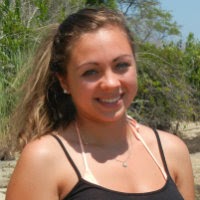
Veronica Pereira, Towson University
Faculty Mentor: Dr. Maggie Sexton
Salinity tolerance of sea nettle Chrysaora quinquecirrha ephyrae
Medusae of the scyphozoan Chrysaora quinquecirrha bloom in the mesohaline portion of the Chesapeake Bay during the summer. They are voracious predators on mesozooplankton as well as a nuisance to swimmers. It is essential to understand the optimal and suboptimal conditions for the larval stage, specifically its salinity tolerance that would help predict when the medusa bloom will occur. Ephyrae were captured with a 200μm plankton net at a public pier in Cambridge, Maryland. Ephyrae were exposed to four different salinity treatments; extreme high and low salinities (3 and 20), and moderate high and low salinities (5 and 15). They were then compared with ephyrae in the ambient salinity (7). After three days, the ephyrae were observed for their depth and pulsation rates. Mortality of ephyrae in the extreme low salinity was 100% but only 10% in the moderate low salinity. There was no significant difference between the height and pulsation of the ambient and high salinities for both the moderate and extreme treatments. Thus ephyrae cannot tolerate salinities as low as 3.

Keilon Robinson Jr., Texas Southern University
Faculty Mentor: Dr. Anthony Nyame
Graduate Student Mentors: Jorge Rodriguez, Bernadette Ezeabikwa
Coauthor: Msano Mandalasi
The Use of Bovine Milk for the Generation of LacDiNAc (LDN) bearing N-glycans for the Chemienzymatic Synthesis of Schistosome-type Antigenic N-glycans
Schistosomes are parasitic blood flukes that cause schistosomiasis, a vascular disease that affects 240 million people worldwide. There are three main species that infect humans namely; Schistosoma mansoni, Schistosoma japonicum, and Schistosoma haematobium. Diagnosis of infections are done by microscopic examination of stool and urine samples from infected hosts while treatment relies on a single chemotherapeutic agent. Vaccines and serodiagnostics are needed to augment and improve the current treatment and diagnostic options. Studies have shown that the major antibody responses in individuals infected with schistosomes are directed against glycans or carbohydrate antigens synthesized by the parasites making these glycans potential targets for both vaccines and serodiagnosis. The structures of the immunogenic glycans have now been found to be lacdiNAc (LDN; GalNAcβ1-4GlcNAc) glycan epitopes and their fucosylated derivatives present on N-glycans. Interestingly, bovine milk glycoproteins also have N-glycan structures with LDN outer branches very much like the structures of schistosome glycan antigens and thus constitute potentially cheap source of LDN bearing N-glycans that can be remodeled to schistosome-type antigenic glycans for evaluation as vaccine and serodiagnostic targets. We have evaluated nonfat dry milk and heifer colostrum for the levels of expression of LDN bearing N-glycans and find that glycoproteins from heifer colostrum express higher levels of LDN epitope. Further, heifer colostrum lacks casein, a non-glycosylated protein abundantly found in nonfat dry milk. Thus, heifer colostrum is a better milk product for preparation of LDN bearing N-glycans. We have prepared lactose free, delipidated, dried colostrum for release of the N-glycans from the glycoproteins.

Kenya Bynes, Hampton University
Faculty Mentor: Dr. Paulinus Chigbu
Graduate Student Mentors: Hector Malagon, Juan Alvarez
Environmental Factors Affecting the Abundance and Distribution of Juvenile Spot (Leiostomus xanthurus) in Maryland Coastal Bays
Seasonal variations in the abundance, biomass, and distribution of juvenile spot (Leiostomus xanthurus) were evaluated using trawl survey data collected from the Maryland Coastal Bays from 1990 to 2012. Juvenile spot mean CPUE peaked in June/July whereas the biomass was highest in August. Abundance and biomass of spot differed significantly among the Bays. Sinepuxent Bay located close to the Ocean City inlet and with relatively high salinity had the lowest spot abundance, whereas the highest abundance was observed in Newport, Isle of Wight and Assawoman Bays located close to the mouth of tidal creeks and small rivers. Juvenile spot abundance was thus negatively correlated with salinity during each month examined, and positively correlated with water temperature except during September and October. Furthermore, spot abundance was negatively correlated with Secchi depth in April, June, and August, and with water depth from April to July. Based on step-wise multiple regression analyses, salinity was the most important variable that was associated with juvenile spot distribution, except in May and July when water temperature was the most important variable. Newport, Isle of Wight and Assawoman Bays where the highest concentrations of spot were observed in this study have degraded water quality due in part to high nutrient concentrations and phytoplankton biomass. It is therefore important to continue monitoring of the water quality conditions at the sites and to reduce nutrient enrichment of the bays in order not to severely impact the essential habitats of spot.

Najja Gay, Lawrence University
Faculty Mentor: Dr. Bradley Stevens
Graduate Student Mentor: Wilmelie Cruz-Marrero
Maryland Benthic Organisms and Offshore Wind Turbines
The US Department of Interior is planning for development of offshore wind turbines off the coast of Ocean City, MD and the area is not well studied. This marine ecosystem currently has no large structures like this and the condition of the epi-benthic fish and invertebrates is uncertain. Identifying species located within the area will lead to understanding of the marine life that would be affected. This project aims to determine community structure of the ecosystem as it relates to the species abundance with depth and location. An assessment of the epi-benthic organisms at 15 prospective sites was conducted by using a ¼ inch-mesh beam trawl in towed transects 10NM from the MD coast on the Outer-Continental Shelf. The catch from the trawl was sorted and identified down to the lowest classification. Twenty–four (24) species of epi-benthic organisms were identified. Cluster analysis revealed three different communities of epi-benthic fauna within the 15 sites observed. Trawling the sea floor provided information about the community structure and location of epifaunal communities. This project produced information that will be extremely useful for determining locations for wind power development within the prospective sites.

August Fuller, John Tyler Community College
Faculty Mentor: Dr. Ali Ishaque
Graduate Student Mentor:
Heavy Metal Analysis of Sediment in Maryland Coastal Bays
In order to support life, small amounts of some heavy metals are essential, however in large amounts they can become toxic to human and aquatic life. Industrial and urban areas have increased in the last decade, bringing greater quantities of these harmful metals into some ecosystems. These metals are now having effects on humans, water quality, and aquatic life. In order to reduce these heavy metals from entering our oceans, lakes, and rivers, pollution from both industrial and urban areas needs to decrease. During this summer, sediment samples were collected and analyzed for their metal content and compared to concentrations measured in June 1997 to see whether the quality of the Maryland coastal bays ecosystem has gotten better or worse. The sediment samples were freeze dried and stored in amber bottles and placed in the refrigerator until analysis. One gram of the sediment was measured into microwave digestion vessels and 10 ml of nitric acid was added for digestion. After digestion Inductively Coupled Plasma (ICP) analysis was conducted on the samples to determine their metal concentrations. The analysis showed that copper concentrations were the highest and cadmium were the lowest. In conclusion, the heavy metal concentrations have decreased. However, copper has increased significantly; the reasons for this are undetermined.

Wyntin Goodman, University of Maryland Eastern Shore
Faculty Mentor: Dr. Nianhong Chen
Graduate Student Mentor: Dev Gurung
Alkaline Phosphatase Activity in the Maryland Coastal Bays
Alkaline phosphatase is a hydrolase enzyme that removes phosphate groups from many types of organic molecules. Through the activity of phosphatase, phytoplankton/bacteria can regulate the amount of inorganic phosphate in their environment. Low availability of dissolved inorganic phosphorus (DIP) induces production of phosphatase, while high availability of DIP inhibits production of phosphatase. Therefore alkaline phosphatase activity (APA) is used as an indicator of the availability of DIP in aquatic environments. In this study, water samples were collected at 13 sites in the Maryland Coastal Bays. The exoenzymatic APA was assessed with addition of fluorogenic substrate, 4-methylumbelliferyl phosphate (MUFP), to the samples. The APA was derived from concentrations of enzymatic hydrolysis products, 4-methylumbelliferone (MUF), which can be measured with a spectrofluorometer. Maximum APA activity (Vmax ) was measured by saturating sample with MUFP. Enzymatic hydrolysis kinetics of alkaline phosphatase were examined through numerical simulation with different models.
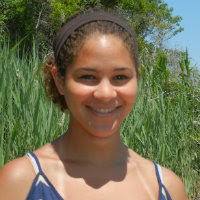
Cloee Grainger, Salisbury University
Faculty Mentor: Dr. Paulinus Chigbu
Graduate Student Mentors: Hector Malagon, Juan Alvarez
Density-Dependent Growth and Mortality of Juvenile Spot (Leiostomus xanthurus) in Maryland Coastal Bays
Not much is known about the environmental factors affecting growth and mortality of spot (Leiostomus xanthurus) during the juvenile stage. Juvenile spot size and abundance data collected from 20 sites in the Maryland Coastal Bays from 1990 to 2012 were used to assess density-dependent growth and mortality. Mean size attained by spot in September varied between years and was negatively correlated with spot relative abundance, but not any of the abiotic factors examined, suggesting density dependent growth.

Samantha Peart, North Carolina State University
Faculty Mentor: Dr. Bradley Stevens
Graduate Student Mentor: Stephanie Martinez-Rivera
Reproduction and Histopathology of Deep-sea Red Crabs (Chaceon quinquedens)
Deep-sea red crabs Chaceon quinquedens support a small but valuable fishery on the Atlantic coast of the United States. There is a lack of biological, survey, and fishery information on deep-sea red crabs and better management approaches are necessary in order to sustain the exploitation of several species worldwide. We hypothesize that the Red Crab females ovulate biennially rather than annually like most crabs. The reproductive cycle was investigated by collecting crab ovaries in June 2013 to create slides for microscopy examination. Oocytes were photographed and measured for analysis. A significant difference between the four stages show that there may be a difference in oocyte sizes but more data is needed to define reproductive stages.
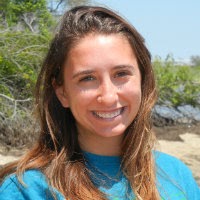
Alexis Sturm, University of Miami
Faculty Mentor: Dr. Eric May
Graduate Student Mentor: Tedra Booker
Oocyte Development in White Perch (Morone americana)
White Perch (Morone americana) were collected from six Chesapeake Bay tributaries each associated with agricultural, developed, or forested land use during 2010 and 2011. The ovaries from these fish were embedded and sectioned to create histological slides. A sample of oocytes’ development was staged based on a set of defined classifications. The results indicate that the proportion of oocytes at the highest classification of development, stage 4, show a significant increase from 2010 to 2011 (p≤0.05). There are also significant differences amongst tributaries and land use classifications (p≤0.05). Particular attention was paid to the stage 4 oocytes, since they were the cells undergoing vitellogenesis, a process that serves as a biomarker of exposure to endocrine disrupting compounds (EDC’s). The results serve as strong evidence that the fish from different tributaries were exposed to varying levels of EDC’s and that the exposure led to increased levels of oocyte development. Developmental differences in female white perch may lead to changes in population structure, behavior, and the overall ecological role and economic viability that these fish have in the Chesapeake ecosystem.

Kendra Wood, University of Maryland Eastern Shore
Faculty Mentor: Dr. Eric May
Graduate Student Mentor: Tedra Booker
The use of vitellogenin as a biomarker in White Perch (Morone americana)
Due to the impact of endocrine disrupting compounds (EDCs) and estrogens in the environment, white perch within the Chesapeake Bay have experienced disruption in their endocrine system. Biomarkers, such as vitellogenin (VTG), are early warning signals of exposure to EDCs. VTG is synthesized and secreted in the liver in response to endogenous estrogens in female fish; it is released into the bloodstream and stored in oocytes where it is converted to egg yolk proteins. In males, the presence of vitellogenin shows that there has been exposure to estrogenic compounds or EDCs. The EDCs and estrogenic compounds are problematic because they are the cause of increased incidences of reproductive disorders, developmental abnormalities in wildlife including fish, and reduced fertility in human males. The source of theses EDCs is widespread and includes anthropogenic as well as agricultural inputs.
The liver of the male white perch was used to establish the presence of vitellogenin within 3 tributaries and 3 seasons. Each tributary was classified based on its land-use pattern: developed agriculture and forested. Fish livers were sonicated in 100μl of phosphate buffered saline in the presence of protease inhibitors. The soluble proteins containing vitellogenin was recovered by centrifugation and extracted. Vitellogenin will be determined using ELISA. Determining the presence of vitellogenin in the liver will contribute to understanding the disruption of the endocrine system of white perch due to land-use patterns and seasonal variations.


